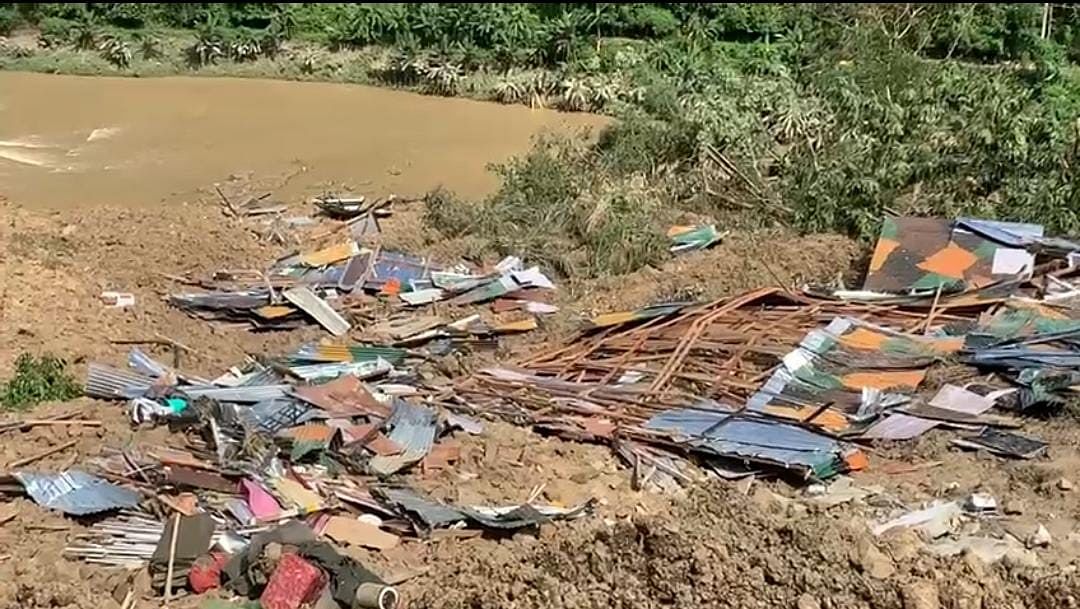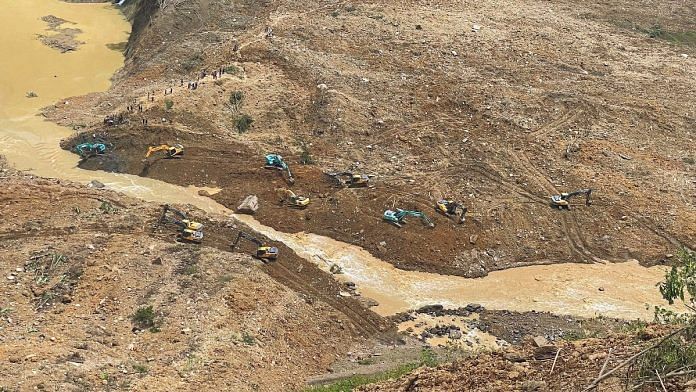Guwahati: From deploying a radar to bringing in a sniffer dog — rescue teams are pulling out all the stops to look for the bodies of people who lost their lives in the devastating landslide that hit Manipur’s Noney district last Wednesday.
The landslide caused maximum damage at the site of the under-construction Tupul railway station, which is part of the Northeast Frontier Railway’s 111-km Imphal-Jiribam project to increase connectivity in the state.
As of Tuesday, rescue teams of the Army, the National Disaster Response Force (NDRF), the State Disaster Response Force (SDRF), and civilian volunteers had recovered 47 bodies, according to Awangbow Newmai, Water Resource and Relief & Disaster Management Minister in the Manipur government, while 14 people are still missing.
In the aftermath of the landslide, uprooted trees and tin roofs were seen scattered across the site amid thick layers of slush. This was all that remained of the Tupul railway camp, which housed construction workers, and Territorial Army barracks for personnel of the volunteer force stationed nearby to ensure the safety of the railway project and workers.

Apart from scouring the area where the Tupul railway camp and Territorial Army barracks once stood, the teams are also digging along the bank of the Ijei river after a body was found downstream Monday afternoon.
The construction site was located along the Ijei river, which flows through two hills in the district.
Explaining the pace of rescue efforts, Sandeep Sharma, chief engineer of the Imphal-Jiribam railway project, told ThePrint Monday that rescue teams are using “Through Wall Imaging Radar (TWIR) and sniffer dogs” to locate the bodies of those who were swept away in the landslide.
Also Read: Road audit, monitoring at-risk points vital, say experts as landslides batter Himachal highways
Rescue efforts underway
A TWIR is a sensor that uses electromagnetic waves below the S-band (frequencies from 2 to 4 gigahertz) to penetrate an obstructive material. They can be used to detect both static and moving targets, especially human beings, even through walls.
Awangbow Newmai told ThePrint that this radar identifies a specific area, narrowing the search limits.
“It indicates a rough area, which we then focus on. We have one radar, which was brought by the Army,” the minister said.
Apart from the radar, the Army has also brought in a sniffer dog to speed up its efforts to retrieve bodies.
That, however, poses one issue, said Newmai. Using a sniffer dog would mean that the site will have to be vacated, he added. “If we vacate the area for sometime, it might delay the whole rescue operation and we haven’t completed the excavation or digging yet. We need to complete that first,” he said.
As many as 200 rescuers, including Army, police, NDRF, and SDRF personnel, along with civilian volunteers, have been engaged in the rescue efforts for nearly a week now. In addition to manually digging up the slush at the site, using shovels and sickles, authorities have also employed 41 cranes and five JCBs to speed up the rescue efforts.
(Edited by Amrtansh Arora)
Also Read: Landslide-prone Sikkim gets its own early warning system



